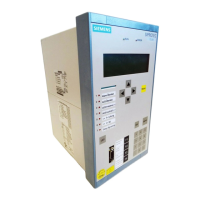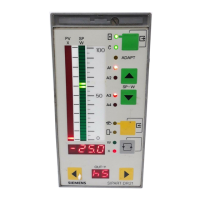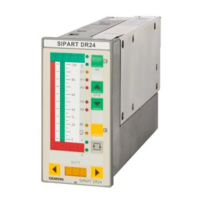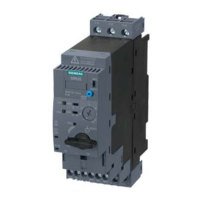The Power trigger function is subdivided for the group of triggers into Level and Gradient triggers.
The Level trigger monitors the measurand for minimum and maximum limit violations. The Gradient trigger
monitors the positive slope (increasing) and the negative slope (decreasing) of the measurand for a limit viola-
tion. The gradient is formed based on the set filtering time.
A hysteresis of 2 % of the setting value is preset for the level and gradient triggers. This is equal to 0.980 p.u.
for the Max. and gradient trigger and to 1.020 p.u. for the Min. trigger.
Exceeding or dropping below one of the set threshold values leads to trigger tripping. The trigger tripping is
however effective on the recorders only if you have routed the trigger on the recorder.
Function Blocks
Function blocks of the Power trigger function:
•
Trigger Psum: Setting of the trigger for the sum active power
•
Trigger Qsum: Setting of the trigger for the sum reactive power
•
Trigger Ssum: Setting of the trigger for the sum apparent power
•
Trigger Pswing: Setting of the triggers for the power swing
NOTE
The thresholds can be set in the primary, secondary, and percentage view. All subsequent setting values
are shown in the secondary view.
You can find the setting values for the power-swing trigger in chapter 7.5.4.8 Application and Setting Notes,
Trigger Power Swing.
Mode
The trigger is switched on, off, or in test mode. In test mode, the fault records are marked with a test flag.
You can find more detailed information on the mode in chapter 7.1.3 Step 2: Setting the Parameters and
Routing in DIGSI 5 .
Switching on Trigger Max./Trigger Min.
With the parameters Max. trigger active and Min. trigger active, you define whether the respec-
tive level trigger is active or inactive.
Trigger Max./Trigger Min.
With the parameters Max. trigger and Min. trigger, you define from which threshold value the acti-
vated level trigger starts a fault record.
Switch on dM/dt Rise - dM/dt Drop
With the parameters dM/dt rise active and dM/dt drop active, you define whether the respective
gradient trigger is active or inactive.
Filter Time
With the parameter Filter time, you define the number of periods with which the gradient is determined.
Gradient Trigger for Rising and Dropping Gradients of the Active, Reactive, and Apparent Power
With the parameters dM/dt rise (/Filter time) and dM/dt drop (/Filter time), you define
from which threshold value within the set filtering time a fault record is started.
Fault Recorder
7.5 Trigger Functions 3-Phase
SIPROTEC 5, Fault Recorder, Manual 337
C53000-G5040-C018-5, Edition 11.2017
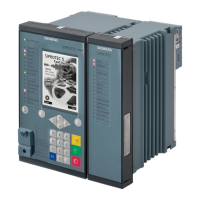
